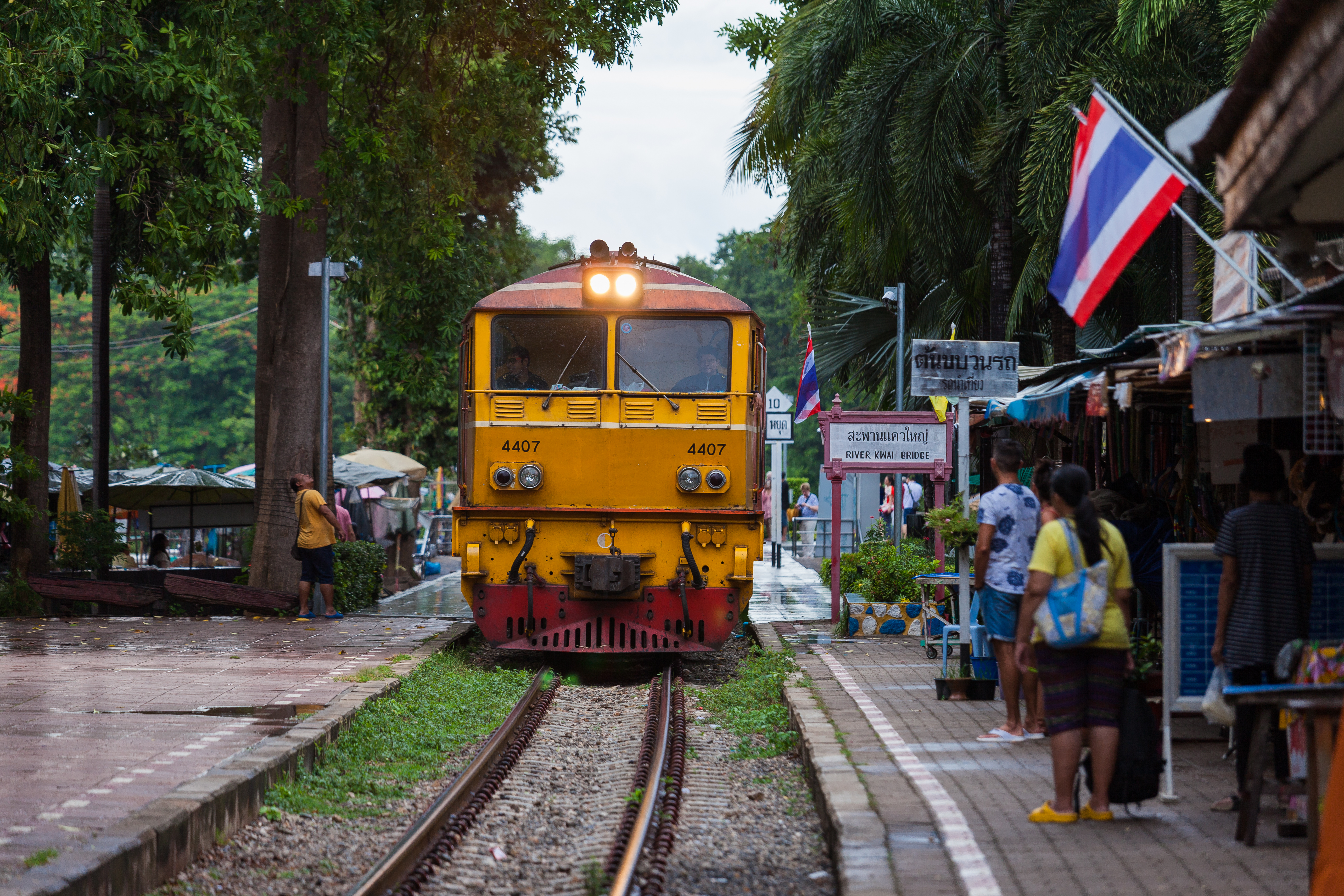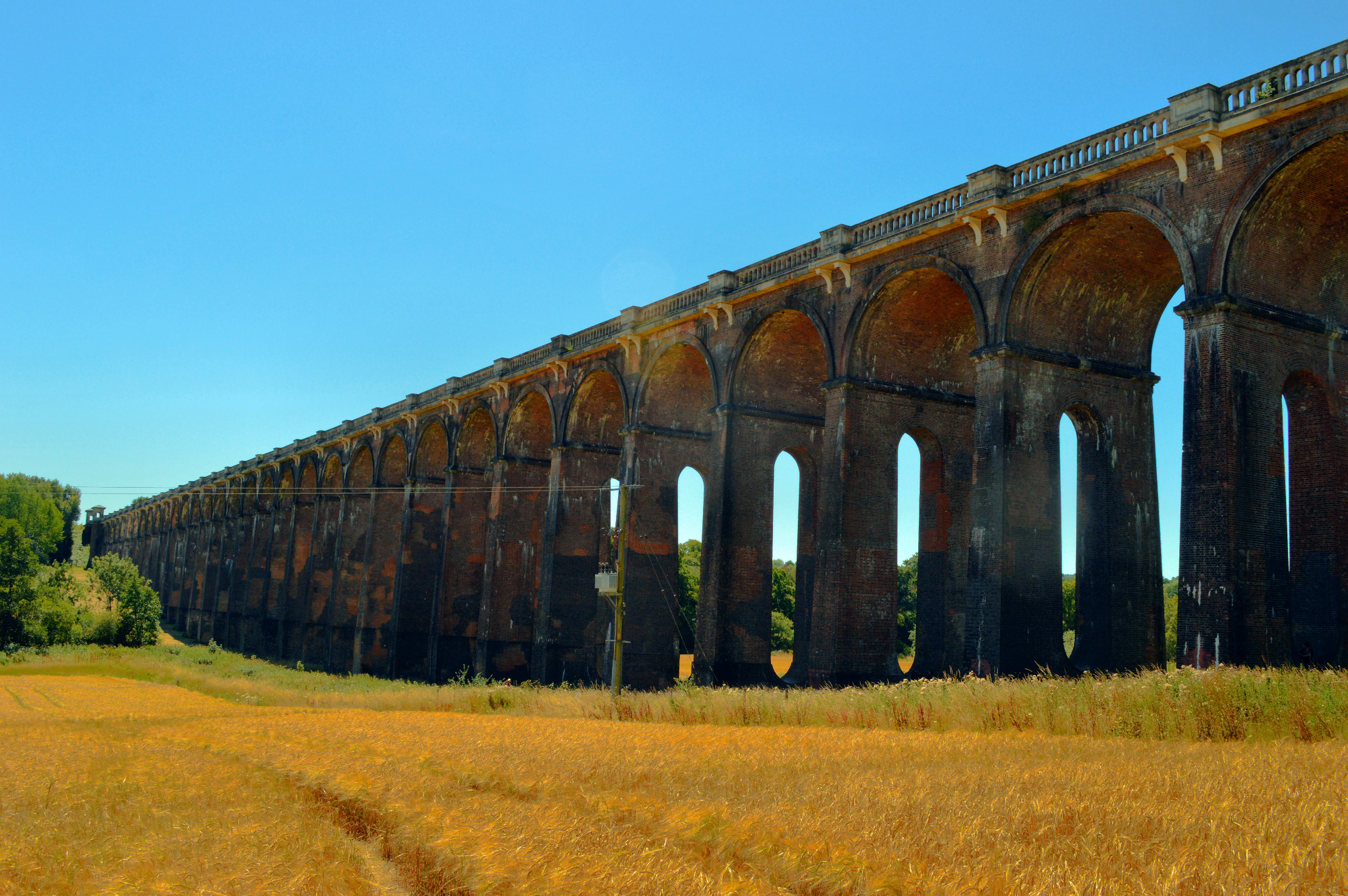|
Wang Pho Viaduct
The Wang Pho Viaduct, (also: Wampo Viaduct) is a railway bridge made of wooden trestles which follow the cliff along the Khwae Noi River. The Wang Pho viaduct was constructed by allied prisoners of war of the Japanese during World War II as part of the Burma Railway. It is sometimes referred as the ''Double Viaduct'', because of a nearby smaller viaduct. The viaduct is still in use and can be reached from the Wang Pho railway station. History In 1939, plans had been developed by the Empire of Japan to construct a railway connecting Thailand with Burma. Construction of the Burma Railway started on 16 September 1942. At kilometre 111, the line met with a massive cliff, and it was decided to built a trestle bridge which follows the cliff along the Khwae Noi River. During the construction of the Bridge on the River Khwae Yai prisoners were transported to the site. By now, it was decided that they had to walk to their camp sites. In March 1943, 700 British, 600 Australian, 450 Dutch ... [...More Info...] [...Related Items...] OR: [Wikipedia] [Google] [Baidu] |
Burma Railway
The Burma Railway, also known as the Siam–Burma Railway, Thai–Burma Railway and similar names, or as the Death Railway, is a railway between Ban Pong, Thailand and Thanbyuzayat, Burma (now called Myanmar). It was built from 1940 to 1943 by civilian labourers impressed or recruited by the Japanese and prisoners of war taken by the Japanese, to supply troops and weapons in the Burma campaign of World War II. It completed the rail link between Bangkok, Thailand, and Rangoon, Burma. The name used by the Japanese Government is ''Tai–Men Rensetsu Tetsudō'' (), which means Thailand-Burma-Link-Railway. Between 180,000 and 250,000 Southeast Asian civilians and over 60,000 Allied prisoners of war were subjected to forced labour during its construction. Around 90,000 of the civilians died, as did more than 12,000 Allied prisoners. Most of the railway was dismantled shortly after the war. Only the first of the line in Thailand remained, with trains still running as far north ... [...More Info...] [...Related Items...] OR: [Wikipedia] [Google] [Baidu] |
Trestle Bridge
A trestle bridge is a bridge composed of a number of short spans supported by closely spaced frames. A trestle (sometimes tressel) is a rigid frame used as a support, historically a tripod used to support a stool or a pair of isosceles triangles joined at their apices by a plank or beam such as the support structure for a trestle table. Each supporting frame is a bent. A trestle differs from a viaduct in that viaducts have towers that support much longer spans and typically have a higher elevation. Timber and iron trestles (i.e. bridges) were extensively used in the 19th century, the former making up from 1 to 3 percent of the total length of the average railroad. In the 21st century, steel and sometimes concrete trestles are commonly used to bridge particularly deep valleys, while timber trestles remain common in certain areas. Many timber trestles were built in the 19th and early 20th centuries with the expectation that they would be temporary. Timber trestles were us ... [...More Info...] [...Related Items...] OR: [Wikipedia] [Google] [Baidu] |
Rail Transport In Thailand
The railway network of Thailand is managed and operated by the State Railway of Thailand (SRT) and has a route length of 4,346 km (2,700 mi). 151 km (94 mi) or 3.47% of all the routes are electrified. History Interest in rail transport in Siam can be traced to when King Rama IV was given a gift of a model railway from Queen Victoria in 1855. The first railway line, 20 km in length, named the Paknam Railway between Bangkok– Samut Prakan began construction in July 1891 under a 50-year concession with a Danish company. Paknam Railway opened in 1894. This railway line was electrified in 1925, made it into the second electric railway service of Southeast Asia after Dutch East Indies (now known as Indonesia). This railway line was decommissioned on 1 January 1959. Royal State Railways of Siam (RSR) was found in 1890 at the same time with a construction of the Bangkok-Ayutthaya railway (), the first part of the Northern Line, was started in 1891 and opened ... [...More Info...] [...Related Items...] OR: [Wikipedia] [Google] [Baidu] |
Railway Bridges In Thailand
Rail transport (also known as train transport) is a means of transport that transfers passengers and goods on wheeled vehicles running on rails, which are incorporated in tracks. In contrast to road transport, where the vehicles run on a prepared flat surface, rail vehicles (rolling stock) are directionally guided by the tracks on which they run. Tracks usually consist of steel rails, installed on sleepers (ties) set in ballast, on which the rolling stock, usually fitted with metal wheels, moves. Other variations are also possible, such as "slab track", in which the rails are fastened to a concrete foundation resting on a prepared subsurface. Rolling stock in a rail transport system generally encounters lower frictional resistance than rubber-tyred road vehicles, so passenger and freight cars (carriages and wagons) can be coupled into longer trains. The operation is carried out by a railway company, providing transport between train stations or freight customer facilit ... [...More Info...] [...Related Items...] OR: [Wikipedia] [Google] [Baidu] |
Viaducts
A viaduct is a specific type of bridge that consists of a series of arches, piers or columns supporting a long elevated railway or road. Typically a viaduct connects two points of roughly equal elevation, allowing direct overpass across a wide valley, road, river, or other low-lying terrain features and obstacles. The term ''viaduct'' is derived from the Latin ''via'' meaning "road", and ''ducere'' meaning "to lead". It is a 19th-century derivation from an analogy with ancient Roman aqueducts. Like the Roman aqueducts, many early viaducts comprised a series of arches of roughly equal length. Over land The longest in antiquity may have been the Pont Serme which crossed wide marshes in southern France. At its longest point, it measured 2,679 meters with a width of 22 meters. Viaducts are commonly used in many cities that are railroad hubs, such as Chicago, Birmingham, London and Manchester. These viaducts cross the large railroad yards that are needed for freight trains there, ... [...More Info...] [...Related Items...] OR: [Wikipedia] [Google] [Baidu] |
As The Crow Flies
__NOTOC__ The expression ''as the crow flies'' is an idiom for the most direct path between two points, rather similar to "in a beeline". This meaning is attested from the early 19th century, and appeared in Charles Dickens's 1838 novel '' Oliver Twist'': Crows do conspicuously fly alone across open country, but neither crows nor bees (as in "beeline") fly in particularly straight lines.Villazon, Luis.“Do crows actually fly in a straight line?” BBC Focus (August 30, 2017). While crows do not swoop in the air like swallows or starlings, they often circle above their nests. One suggested origin of the term is that before modern navigational methods were introduced, cages of crows were kept upon ships and a bird would be released from the crow's nest when required to assist navigation, in the hope that it would fly directly towards land. However, the earliest recorded uses of the term are not nautical in nature, and the crow's nest of a ship is thought to derive from its ... [...More Info...] [...Related Items...] OR: [Wikipedia] [Google] [Baidu] |
Tavoy
Dawei (, ; mnw, ဓဝဲါ, ; th, ทวาย, RTGS: ''Thawai'', ; formerly known as Tavoy) is a city in south-eastern Myanmar and is the capital of the Tanintharyi Region, formerly known as the Tenasserim Division, on the northern bank of the Dawei River. The city is about southeast of Yangon. Its population (2014 estimate) is 146,964. Dawei is a port at the head of the Dawei River estuary, . from the Andaman Sea. As a result, the city is prone to flooding during the monsoon season. "Dawei" is also the name of one of Myanmar's 135 ethnic minorities. Etymology ''Dawei'' derives from the Mon language term ''hawai'' ( mnw, ထဝဲါ; ), which means 'to sit cross-legged', in reference to the Buddha's sitting posture on the palin (throne). History The area around the Dawei River estuary has been inhabited for centuries by Dawei, Mon, Kayin, and Thai mariners. As the ancient site, Sagara City, old Dawei, which is approx 6 miles north of present city, has so many traces ... [...More Info...] [...Related Items...] OR: [Wikipedia] [Google] [Baidu] |
Dynamite
Dynamite is an explosive made of nitroglycerin, sorbents (such as powdered shells or clay), and stabilizers. It was invented by the Swedish chemist and engineer Alfred Nobel in Geesthacht, Northern Germany, and patented in 1867. It rapidly gained wide-scale use as a more robust alternative to black powder. History Dynamite was invented by Swedish chemist Alfred Nobel in the 1860s and was the first safely manageable explosive stronger than black powder. Alfred Nobel's father, Immanuel Nobel, was an industrialist, engineer, and inventor. He built bridges and buildings in Stockholm and founded Sweden's first rubber factory. His construction work inspired him to research new methods of blasting rock that were more effective than black powder. After some bad business deals in Sweden, in 1838 Immanuel moved his family to Saint Petersburg, where Alfred and his brothers were educated privately under Swedish and Russian tutors. At age 17, Alfred was sent abroad for two year ... [...More Info...] [...Related Items...] OR: [Wikipedia] [Google] [Baidu] |
Burma
Myanmar, ; UK pronunciations: US pronunciations incl. . Note: Wikipedia's IPA conventions require indicating /r/ even in British English although only some British English speakers pronounce r at the end of syllables. As John C. Wells, John Wells explains, the English spellings of both Myanmar and Burma assume a non-rhotic variety of English, in which the letter r before a consonant or finally serves merely to indicate a long vowel: [ˈmjænmɑː, ˈbɜːmə]. So the pronunciation of the last syllable of Myanmar as [mɑːr] or of Burma as [bɜːrmə] by some speakers in the UK and most speakers in North America is in fact a spelling pronunciation based on a misunderstanding of non-rhotic spelling conventions. The final ''r'' in ''Myanmar'' was not intended for pronunciation and is there to ensure that the final a is pronounced with the broad a, broad ''ah'' () in "father". If the Burmese name my, မြန်မာ, label=none were spelled "Myanma" in English, this would b ... [...More Info...] [...Related Items...] OR: [Wikipedia] [Google] [Baidu] |
Thailand
Thailand ( ), historically known as Siam () and officially the Kingdom of Thailand, is a country in Southeast Asia, located at the centre of the Indochinese Peninsula, spanning , with a population of almost 70 million. The country is bordered to the north by Myanmar and Laos, to the east by Laos and Cambodia, to the south by the Gulf of Thailand and Malaysia, and to the west by the Andaman Sea and the extremity of Myanmar. Thailand also shares maritime borders with Vietnam to the southeast, and Indonesia and India to the southwest. Bangkok is the nation's capital and largest city. Tai peoples migrated from southwestern China to mainland Southeast Asia from the 11th century. Indianised kingdoms such as the Mon, Khmer Empire and Malay states ruled the region, competing with Thai states such as the Kingdoms of Ngoenyang, Sukhothai, Lan Na and Ayutthaya, which also rivalled each other. European contact began in 1511 with a Portuguese diplomatic mission to Ayuttha ... [...More Info...] [...Related Items...] OR: [Wikipedia] [Google] [Baidu] |


